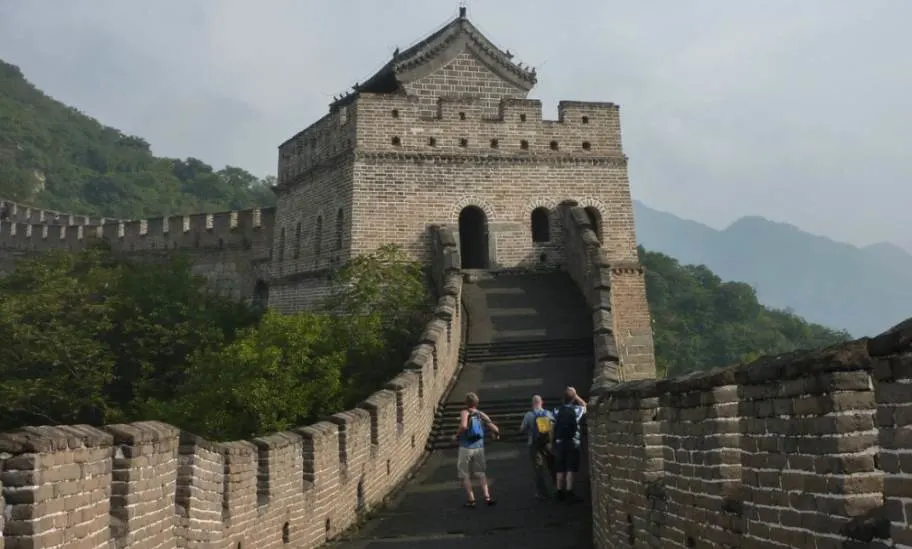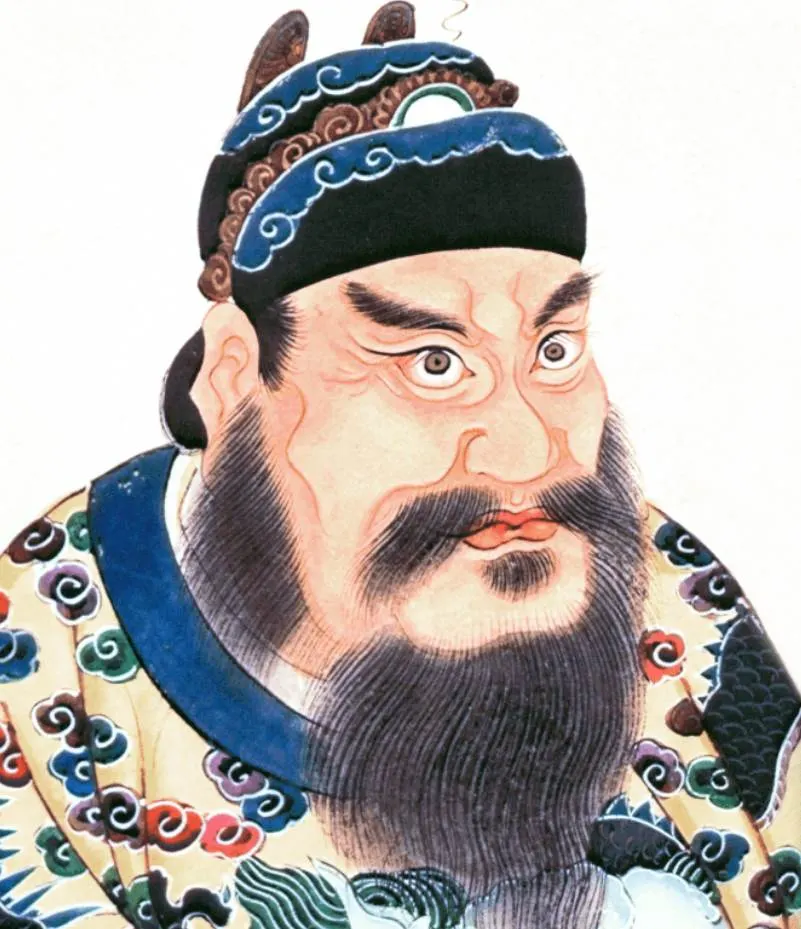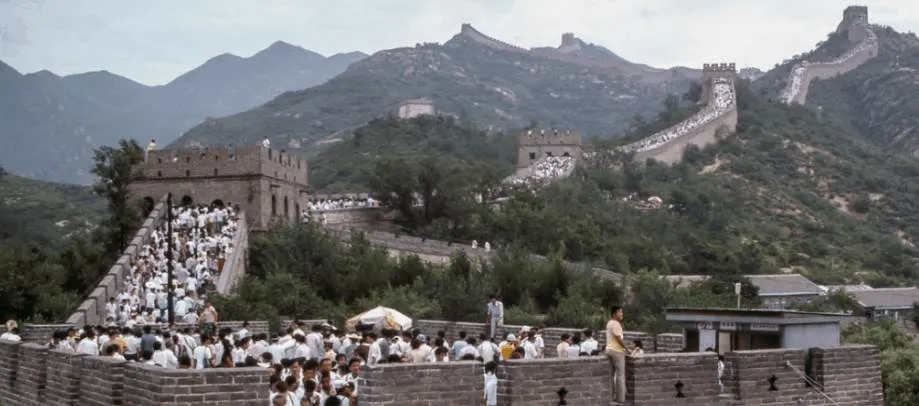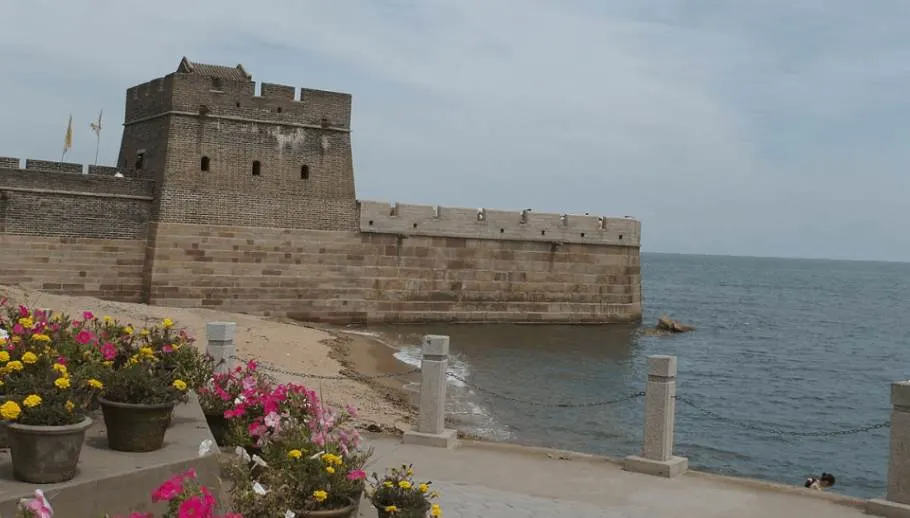The Great Wall Of China is one of those historical monuments everybody in the world knows. But do you know all the facts about the Great Wall Of China?
Mesmerizing is one word to describe this colossal structure as you see it run along the historical Northern Chinese border.
That’s pretty much the exact reason that tourists from all over the world flock to it to get a glimpse of this incredible feat of engineering, especially the section near China’s capital Beijing.
The Great Wall of China is also one of the 7 wonders of the world today as voted for by over 100 million people.
Art Facts did some digging and created a list with interesting facts about the Great Wall of China you should know.
1. Why was the Great Wall Of China Built?
Historically China has been invaded by various groups of nomadic intruders. One of them was one of the most feared warriors in history, the emperor of the Mongol Empire, Genghis Khan.
The reason it was built is very simple, to keep the nomadic invaders out and protect the various Chinese empires and Dynasties.

2. How old is the Great Wall Of China?
Various dynasties, including those of Qin, Wei, Zhao, Qi, Han, Yan, and Zhongshan, started building walls along their borders as early as 700 B.C.
The wall is now over 2,700 years old and construction took over 2,000 years.
3. How long is the Great Wall of China?

The Great Wall of China is not just one big wall. It consists out of various walls built by different Chinese Dynasties and empires.
The total length of all these constructions combined is 21,196 km (13,171 mi).
4. How high is the Great Wall of China?
The height of the wall varies from place to place. The highest point of the wall is around 15 meters (50ft.), while in other places it’s only about 5 meters (16ft.).
Interesting fact: In a lot of places, the wall has decreased in size due to either erosion or parts of the wall being used to construct houses.
5. The Ming Dynasty Wall
If you think about the Great Wall of China, I’m pretty sure you see a vision of a brick wall with guardhouses, right?
That’s just part of the wall. It was built by the Ming Dynasty between 1368 and 1644 A.D.

6. Parts of the wall were destroyed
In our post related to the Terracotta Army, you can learn about the first emperor of a unified China, Qin Shi Huang.
During his reign, he unified several parts of China into one empire. To establish this unified China, he ordered the destruction of several parts of the wall that still divided the empire.
He made up for that by building large portions of walls to connect the parts that were destroyed.
7. Most of the Qin wall is gone
The parts of the wall built during the reign of the First Emperor Qin Shi Huang are now gone.
The construction started in 221 B.C. after all and wasn’t as sophisticated as the well-known brick wall of the Ming Dynasty.
8. Over a million people died during the Qin Wall Construction
The First Emperor of China wasn’t known for his compassion towards his workers. Better yet, the construction of his wall is known to be one of the most hated projects in Chinese history.
For good reason.
It’s estimated that over one million people died during the construction of the Qin wall.

9. When did construction stop?
Construction stopped in 1644, which is the year the Ming Dynasty fell. The Ming dynasty is responsible for the most preserved and well-known parts of the wall.
Construction of the Ming Dynasty part of the wall started in the 14th century.
10. Where is the Great wall located?
For the most part, the Great Wall of China was intended to protect the Chinese Empire(s) against invaders from the North. So it mainly spans the Northern Chinese border.
All parts of the wall can be found in these 15 regions of China:
- Heilongjiang
- Jilin
- Liaoning
- Inner Mongolia
- Beijing, Tianjin
- Hebei
- Shandong
- Henan
- Shanxi
- Shaanxi
- Gansu
- Ningxia
- Qinghai
- Xinjiang

11. An ingredient that sticks
How were ancient dynasties able to build a wall that lasts so many centuries?
The answer is simple: sticky rice!
Using glutinous rice as mortar has proven to be an effective way to build a solid wall. Better yet, it’s also proven to help against earthquakes and other natural disasters according to Dr. Zhang Bingjian.

More interesting facts about the Great Wall of China
12. About 1/3 of the Great Wall of China has disappeared. This can be due to people stealing stones and selling them as collector’s items or stealing stones to build houses or other buildings.
13. Nothing has been done for the wall since 1644 except renovations to attract more tourists. This is the year the Ming Dynasty fell.
14. The most well-known portion of the wall is built by the Ming Dynasty and is about 8,851 km (5,500 mi) long.
15. The wall in Badaling around the Bejing municipality is the most visited section of the Great Wall of China.
16. The restoration of a portion of the Great Wall of China in Badaling finished in 1957. This was the year the wall welcomed its first tourists as well.
17. Over 50 million people visit the Great Wall of China in Badaling every year.
18. Since June 1, 2019, the Chinese government has imposed a quota as to how many people may visit the section of the wall in Badaling. The limit is 65,000 people a day which should prevent total overcrowding.

19. With this new quota, the amount of space per visitor is 1.1 square meters (11.84 sq ft).
20. Over 460 world leaders and VIPs have already visited the Great Wall of China. This includes the visit of Richard Nixon and his wife during their historical visit in 1972.
21. New sections of the wall are still being discovered, even outside of China. A part of the wall was discovered with the help of Google Earth deep in one of the most famous deserts in the world, the Gobi desert, in August 2011.
22. The Great Wall of China has been put on the UNESCO world heritage list since December 1987.
23. The wall wasn’t always enough to keep invaders out. One example is the infamous Genghis Khan who breached the wall in the 13th century and controlled large parts of Northern China subsequently. Another is the invasion of the Manchus which ended the Ming Dynasty that built the most prominent part of the wall.
24. Is it the “Great Wall of China, “The China Wall,” “The 10,000-Li-Long Wall” or something else? The wall has a lot of names in different places so the Chinese decided to keep it simple as they call it: “The Long Wall.”
25. The wall can’t be seen from space. This is contrary to the popular belief and confirmed by the most famous astronauts that have been into space, including Neil Armstrong.
26. If weather conditions are favorable and you know exactly where to look, you can see the Great Wall of China from the low orbit of the Earth, which starts at about 160 kilometers (100 mi) from the Earth’s surface.
27. Apart from the parts north of Bejing where most tourists visit the wall, most parts of the wall lay in ruins.
28. Within 20 years, large parts of the wall will vanish due to erosion from sandstorms. Especially the Western parts as these are mostly constructed with mud rather than from stone.

29. Helping to construct the wall was a form of punishment for criminals. This ranged from evading taxes to murder. Considering it’s estimated that over a million people died during its construction, this was not a form of community service that criminals looked forward to.
30. Lady Meng Jiang’s husband was forced to work on the wall’s construction. She visited him to bring him clothes during the cold winter months. When she arrived, her husband had already died. When hearing the news she cried so much that the wall collapsed and out came the bones of her late husband.
31. Lady Meng’s story is one of the 4 most popular folklore stories in China. We must remind you that this story has several variations to it.
32. While the wall is a collection of multiple walls, it’s considered to be the longest man-made structure in the world.

33. Every year a marathon is held on the Great Wall of China. This marathon is quite more intense as it contains 5,164 stone steps and a lot of hills. You better train hard before joining this one.
34. With so many people dying during the construction of the wall, it has been called the largest cemetery on earth. That being said, evidence of people being buried inside the wall hasn’t been found yet.
35. Family members of people that died during the construction of the wall feared their loved one’s souls would be trapped inside of it. To help their soul pass on, they put a rooster on top of the coffin of the deceased as that was believed to help achieve this.
36. The most photographed part of the Great Wall of China is located in Jinshanling. Here the wall crosses steep hills making it the perfect spot for tourists to take pictures of this amazing structure.

37. Using infrared cameras, a 180 kilometers (108 mi) stretch was uncovered that was concealed by hills, trenches, and rivers. Together with 2012 finds we talked about earlier in our post with facts about the Great Wall of China, this just shows the wall is much longer than we know right now.
38. With an average width of around 4 to 5 meters (12-15 ft), the Great Wall of China was not only used to fend off invaders, but also as a means for transportation.
39. A staggering 25,000 watchtowers have been built on the wall. This is an estimate as a lot of them have simply vanished over the centuries along with large parts of the wall itself.
40. The First Europeans to visit China made no reference to the wall whatsoever. These include Marco Polo, Giovanni da Pian del Carpine, William of Rubruck, Giovanni de’ Marignolli and Odoric of Pordenone.
41. Marco Polo did see the wall. During this period though, the wall was insignificant and Marco Polo crossed it several times during his visits to Kublai Khan’s palace in Xanadu.
42. The first time stories about the wall started circulating in Europe was in the 16th century when Europeans started visiting the Ming Dynasty by ship.
43. Could it be because of the horrible stories related to workers dying while constructing the wall? Or is it because it never really stopped invasions, the very reason it was built? Somehow, other countries have been more lyrical about the Great Wall of China than China itself. That is of course until they opened up to mass tourism and the wall became a very appealing symbol for China.

44. In the late 1930s, the Second Sino-Japanese War was fought near the Great Wall of China. Some parts of the wall still contain bullet holes from this conflict.
45. The Ming Dynasty was not only the most fervent builder of the wall and had the best tools and resources, but it also restored a lot of the wall that was destroyed by invasion attempts.
46. The total length of the wall that the Ming Dynasty built, starting in the late 14th century and ending in 1644, is 8851 kilometers (5,500 mi).
47. Just like in European castles and other fortifications, the wall contains holes that allowed archers to shoot at invaders as the first line of defense.
48. Where does the Great Wall of China end? Right in the sea in a place called “Laolongtou.” This stands for “Old Dragon Head.”

